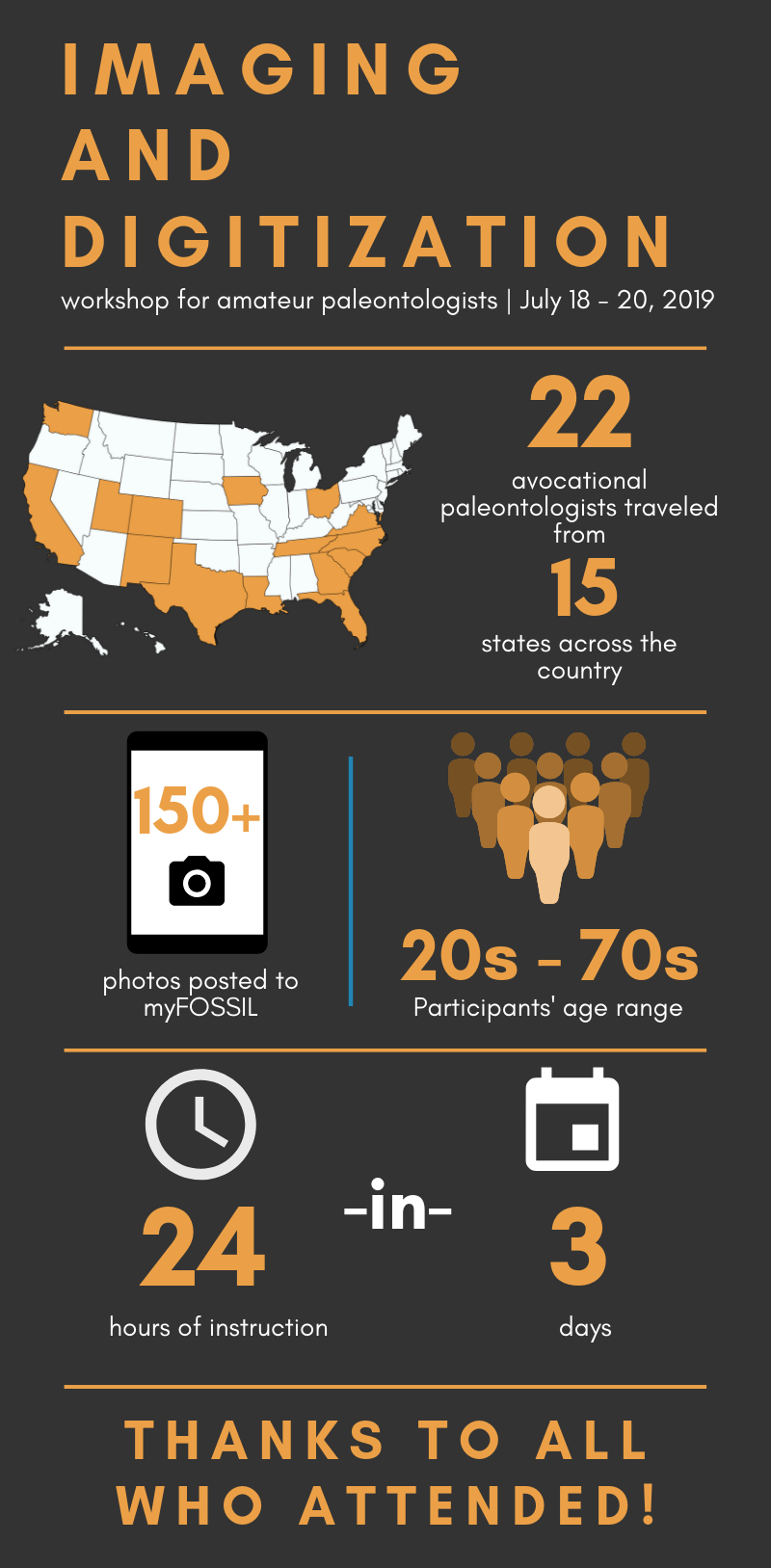By Jeanette Pirlo
This past July, the FOSSIL Project co-hosted an Imaging and Digitization Workshop for Avocational Paleontologists with iDigBio. The goal of the workshop was to increase the number of myFOSSIL community members digitizing their private collection and sharing it through the myFOSSIL eMuseum. Over three days, 22 participants from across the country enhanced their preexisting techniques, and learned new techniques from our resident imaging expert, Zach Randall. By focusing on simple imaging skills using low-tech items like cell phones, tablets, and point-and-shoot digital cameras, participants learned the importance of lighting, focus, and background (Fig 1). They also learned how to use image manipulation software to enhance their images.

We began the workshop by discussing workshop’s goals and built a list of goals that the participants had (Fig 2). We made sure to include participants’ goals into each talk and hands-on activity, to ensure that both parties got the most out of the workshop. The workshop continued with talks and hands-on activities to familiarize participants with their imaging tools. Click here to read the full workshop agenda. As our participants are paleontologists at heart, we wanted to provide them with a chance to collect their own specimens to image. We took a field trip to a local Gainesville creek on the second day, and spent the morning collecting fossils (Fig 5). While in the creek, PhD student from the College of Education, Richard Bex, surveyed the interactions occurring between our participants. Results of the interactions are being analyzed and will be published at a later date.
The final day of the workshop was focused on manipulating images using open source software like GIMP (Fig 3-4). We also practiced on apps available on smart phones and tablets for those participants who do not have access to computers at home. Participants also spent the remaining portion of the last day on uploading images of their personal collections to the myFOSSIL e-museum. A main goal of the workshop was to increase the number of specimen images in the e-museum. The images that display high quality and are considered research grade, will receive GUIDs and be ingested by iDigBio for research potential. By the end of the workshop, over 120 new specimens had been added to the myFOSSIL eMuseum.
A program evaluation was sent to participants at the end of the workshop. Results are still being processed, but many of the responses are summarized in the quotes below:
- “I also plan to use the myFOSSIL eMuseum as my primary database for recording and tracking my fossils. I currently use a Google Sheet to record my fossil data, but the myFOSSIL data is more complete and brings together data that I typically keep in disparate places into one location. With the ability to download the data, I can store it for my own records.” – 2019 Participant
- “The workshop exceeded my expectations. I have been taking and manipulating digital photos for over 20 years and I still learned a lot that was very useful. I’ve immediately implemented many of the things I learned in the workshop and can see a drastic improvement in the quality of the photos of my specimens.” – 2019 Participant
- “Everything I expected was done very well, it was organized well, time was well spent, adding a field trip was a good idea, we had time to collaborate with each other after the meeting in the hotel. It was a nice diverse group that you selected.” – 2019 Participant
These results will be used to improve and enhance future workshops. We aim to have an Imaging 2.0 workshop for next summer, focusing on 3D imaging. We hope to provide similar opportunities for avocational paleontologists and improve their photogrammetry techniques.




